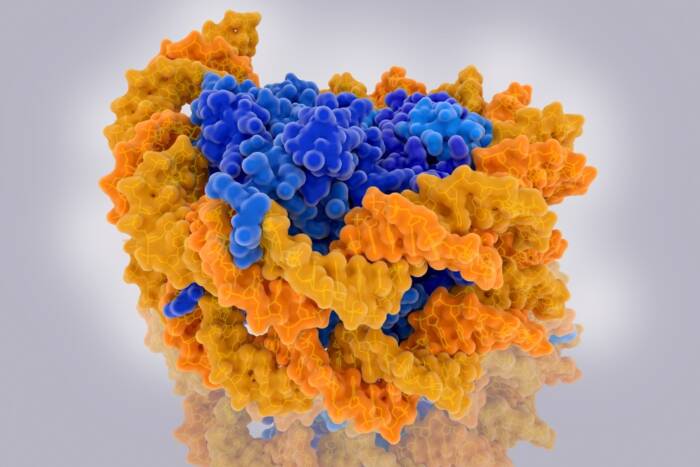Megan Elizabeth van Overbeek
 B.A., University of California, Santa Cruz; D.E.A., Université Pierre et
B.A., University of California, Santa Cruz; D.E.A., Université Pierre et
Marie Curie
The Apollo Nuclease Binds to TRF2 and Protects Telomeres in S Phase
presented by Titia de Lange
The third student to graduate from my lab this year and the speaker at today’s luncheon, Megan van Overbeek, joined my lab with a keen interest in chromosome biology and a deep affection for microscopy. Megan’s last name is of Dutch origin, leading me to continually make the mistake of pronouncing it the Dutch way, including today. However, when I first met Megan, I did not think she was Dutch, or American: I was convinced she was French. It took me a while before I believed that despite her fluent French, her ability to make exquisite mousse au chocolat, her flair and her undergraduate studies on kinetochores at the Institut Curie in Paris, she is in fact not French at all. Megan is from that other country where the food is better, good wines are local and people know how to enjoy life: California.
Megan began her studies on the protection of mammalian chromosome ends by focusing on Rap1, an ancient protein at telomeres, part of the shelterin complex that is central to our work. But among the shelterin components, Rap1 had been largely ignored by us, not getting the attention it deserved. Arguably fitting with Megan’s general approach to life, which is marked by originality, she was attracted to the Rap1 project, which placed her outside the mainstream.
Another one of Megan’s personality traits led to her discovery of the new shelterin-associated protein she wrote her thesis on. Megan had done extensive mass spectroscopy analysis of the Rap1 complex in collaboration with Brian Chait’s lab. Nothing new came out of that. Most students would have given up at this point, accepting the results of the world’s leading mass spec lab as the ultimate truth. Not Megan. Because authority means little to Megan, she insisted that there were proteins in the Rap1 complex that her studies with the Chait lab had missed. So she pressed on and eventually got what she wanted, not untypical of Megan.
As a result, two years ago, Megan gave birth to a new member of the growing family of nucleases in the shelterin complex and affectionately named her nuclease Apollo in reference to its similarity to another nuclease called Artemis. At about the same time, Megan gave birth to her daughter Helena, in Greek mythology a half sister of Apollo, sharing Zeus as a father. But in Megan’s saga, Apollo and Helena share a mother.
Despite the arrival of Helena, Megan did not neglect Apollo, making a series of discoveries on its function that formed the center of her thesis. She now has returned to her first love in my lab, Rap1, trying to get to the bottom of its function before she moves on to postdoctoral research. Megan brings to science a powerful combination of originality, independence, determination and genuine excitement that will form a fertile ground for future scientific discovery.


